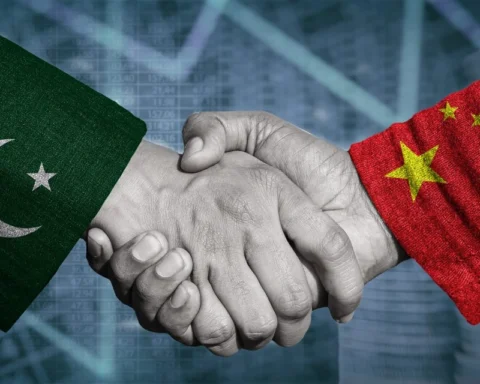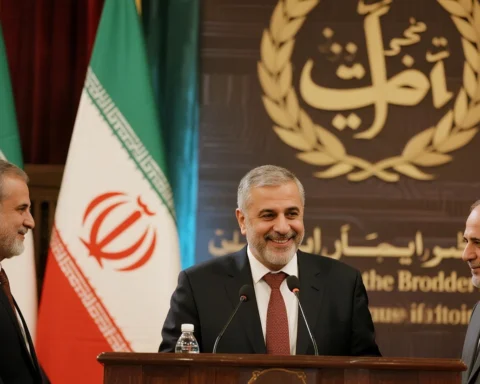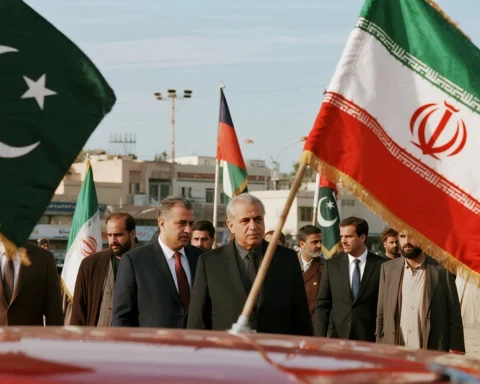Leaders from ASEAN nations, China, and six Gulf Cooperation Council (GCC) governments recently met in Malaysia to plot a cooperative road forward in a time of changing geopolitical settings and rising trade tensions. Under the cover of fostering mutual collaboration, the summit became a vital forum for tackling the mounting difficulties presented by the US tariff war and its larger consequences for world trade. The conference underlined a common dedication to create closer economic relations and create a group plan able to resist the demands of single trade policies.
Attending the event, Malaysian Prime Minister Anwar Ibrahim underlined the extraordinary need for strong cooperation between ASEAN and the Gulf Cooperation Organization (GCC). Speaking at the joint gathering, he underlined that it is not only relevant but also necessary for these regional blocs to unite at a period when world trade systems are becoming disintegrated. “I believe that strong ties between ASEAN and the Gulf Cooperation Organization have never been more needed than they are right now,” Anwar said. His comments capture a larger regional worry about the instability brought about by US administration tariff policies and the need of coordinated actions to protect shared economic interests.
The backdrop to this conference is the progressively complicated geopolitical scene created by US strategic use of tariffs as a means of economic pressure. Many countries have found themselves negotiating difficult terrain since the US tariff war started since protectionist policies disturb long-standing trade flows and supply networks. Often imposed unilaterally, these tariffs can compromise the global commercial system many nations depend on for their own prosperity. Declaring a concerning trend toward economic nationalism and fragmentation, Prime Minister Anwar said that the global trading system is “moving towards the next stage where there is talk of unilaterally imposing tariffs by the United States.”
Against this difficult context, the alliance of ASEAN, China, and the Gulf states represents a significant strategic development. With ASEAN as a dynamic and fast expanding market, China as the manufacturing powerhouse worldwide, and the Gulf countries as main energy suppliers and investment hubs, these areas are vital participants in the global economy. Their combined approach aims not just to offset the negative consequences of US tariffs but also to build a substitute structure supporting fair and free trade.
Key subjects of the talks were economic integration and collaboration. These areas want to create a strong economic bloc competent of withstanding outside shocks by strengthening trade connections, improving connectivity, and increasing mutual investments. For ASEAN nations, which include rising economies like Vietnam, Indonesia, and the Philippines, partnership with rich Gulf states presents fresh chances for financial investment and infrastructure development. Likewise, China’s participation offers manufacturing and technological know-how that enhances the development objectives of Gulf countries as well as ASEAN.
The conference also underlined the need of diplomatic involvement in reducing trade conflicts. The leaders agreed that open communication and multilateralism are necessary for the resolution of conflicts and promotion of economic consistency. The joint declaration from the summit asks for the improvement of international trade rules and institutions to guarantee predictability and justice in a climate where unilateral tariffs run the danger of starting trade wars that might spiral into more general economic strife.
Given the historical and financial links between these areas, this group approach is especially important. Traditionally, ASEAN and the Gulf Cooperation Council have maintained strong energy trading ties; the Gulf nations provide essential oil and gas to ASEAN markets. As a key trading partner of both areas, China has progressively expanded its influence by means of projects like the Belt and Road Initiative (BRI), meant to improve infrastructure connectivity and economic integration across Asia and beyond.
Together, these players are clearly expressing solidarity against protectionist impulses and the division of world markets. Their combined approach emphasizes a realization that unity and cooperation are essential in the face of outside financial demands. This is a conscious shift from the time of isolated, zero-sum economic practices toward a more cooperative, multipolar international economy.
Practically, the combined approach calls for numerous important areas of collaboration. Among these are lowering trade barriers among members, encouraging technology transfer, increasing collaborative infrastructure and energy projects, and building knowledge-exchanging venues. Significantly, the alliance also aims to diversify supply chains, therefore lowering reliance on any one market and improving economic resilience.
The ramifications of this meeting go beyond only pragmatic financial goals. It is also a diplomatic move meant to balance power relations in a global order under more conflict. With the US leveraging tariffs as leverage, the alliance of ASEAN, China, and the Gulf countries offers a counterbalance encouraging an open, rules-based trading system. This alignment also emphasizes how increasingly important regional and interregional collaboration is as means of negotiating geopolitical uncertainty.
Besides, the conference in Malaysia shows a common understanding of the necessity of sustainable development. The Gulf states’ great energy resources and ASEAN’s expanding markets offer rich ground for collaboration on renewable energy projects and environmental initiatives as global economic debates centre on green energy and climate resilience. Such cooperation might solve urgent issues of climate change and generate fresh economic possibilities.
The combined conference of ASEAN, China, and the Gulf Cooperation Organization in Malaysia marks a turning point in the developing story of world trade relations. It represents a proactive attempt by both developed and emerging countries to steer a course of mutual development and cooperation and counteract the destabilizing effect of single tariff policies. This coalition shows how regional cooperation may build resilience, stability, and shared prosperity as the global trading system confronts increasing uncertainty. Although the US tariff war may have raised tensions, it has also inspired these countries to unite behind a shared vision that gives cooperation, communication, and the future of sustainable development top priority in a sophisticated world economy.








